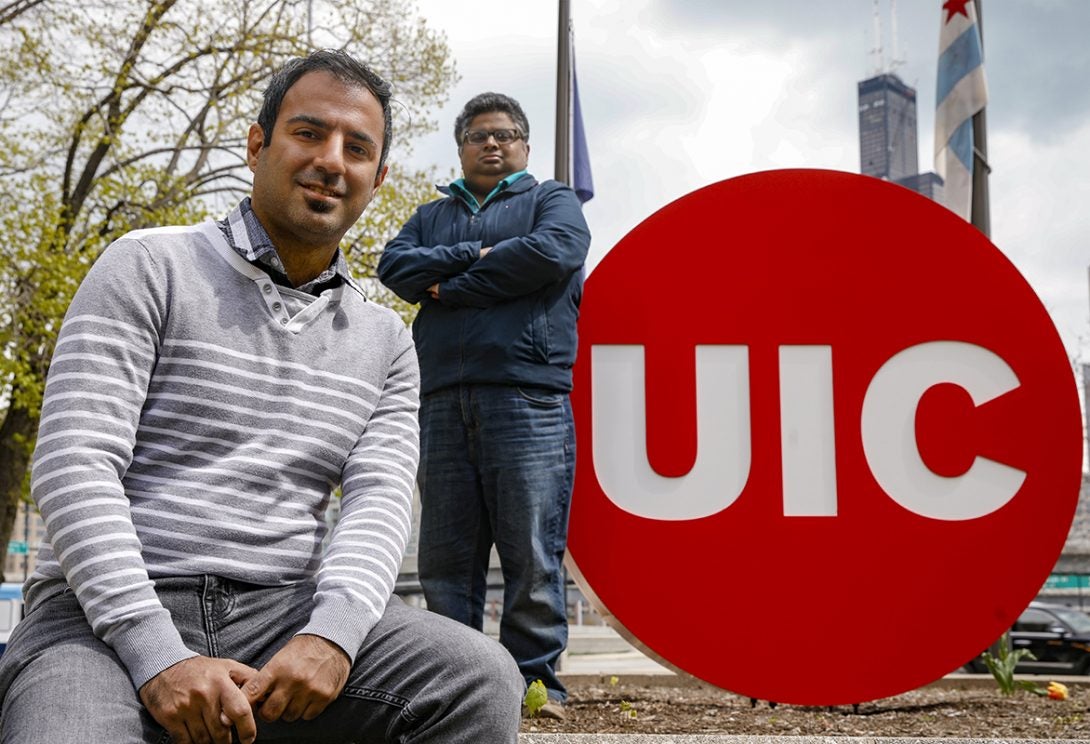Understanding the basic physics of boiling droplets
1

A team of engineers led by Sushant Anand, an assistant professor in mechanical and industrial engineering at UIC, have made a breakthrough researching bubble dynamics inside single boiling droplets.
The research provides new insights into how drops boil, a phenomenon that most of us routinely encounter in our kitchen. But it also is integral in many industrial processes, including the cooling of semiconductor transistors, metallurgy, quenching, fire extinguishing, medical laser surgery, electronic cooling, and a wide variety of applications where spray cooling is used.
“Those who work in spray cooling and boiling know that resolving and measuring bubble dynamics inside drops is one of the most challenging problems,” Anand said. “We overcame this problem by leveraging the fantastic high-speed X-ray techniques at Argonne National Lab.”
“We were able to measure variation in number and size distribution, bubble growth, and the latent heat flux component of total heat transfer of a single growing bubble for the first time,” he explained.
One of the main challenges in spray cooling is understanding the different components of boiling heat transfer. As a droplet boils on a superheated surface, the bubbles nucleate and grow in number and size while also fusing with one another. Throughout this process, it has never been clear how much heat is actually dissipated by the phase-change of liquid to vapor that fuels the bubble growth. The team measured this heat for the first time.
The researchers’ work could further our understanding of the physics of boiling droplets. Their ultimate goal is to find ways to enhance boiling heat transfer during droplet/spray impact, which includes developing design criteria for engineering the surfaces that make it possible.
“Enhancing the boiling heat transfer will make many industrial processes more efficient, and that will influence the next generation of engineering surfaces,” Anand said. “But you can’t design those surfaces until you understand the basics of how boiling really happen at microscales. We are trying to answer the very first question: how does it all begin when a drop is boiling? And what is the role of surface texture during this process? That will help us design next-generation surfaces that can lead to very high heat transfers in boiling and spray cooling.”
Now that the researchers have made one important contribution, they are eager to further examine the same process to learn more.
“Understanding bubble dynamics inside boiling drops has been a bottleneck for a long time,” Anand explained. “We are driven to understand the basics and physics of how fundamentally these problems happen. It’s a very important problem since spray cooling is very important in many applications and multibillion-dollar industries.”
Findings of this research are featured in the International Journal of Heat and Mass Transfer under the title “Microbubble dynamics and heat transfer in boiling droplets.” The team includes PhD student Navid Saneie, postdoctoral researcher Varun Kulkarni, and undergraduate student Bruce Treska, all of the University of Illinois Chicago; Neelesh A. Patankar of Northwestern University; and Kamel Fezzaa of Argonne National Laboratory.
For more information, visit Anand’s lab website.